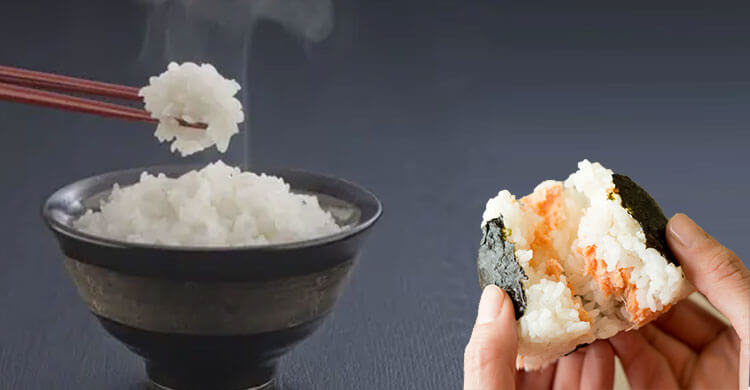A bowl of hot, glistening white rice. Kome (Rice) has long been the staple food of Japan, and it still makes frequent appearances on the dining table.
Hi everyone how are you doing? Today, I’d like to talk about rice (kome in Japanese) I eat every day.
How do people plant Kome (Rice)-seeds and harvest them?
For many people in out country, a sense of nostalgia is evoked by images of farmers planting seedings or harvesting rice with the beautiful natural scenery of the season as a backdrop.
Seeing the above photo I remember my childhood planting rice-seedings in spring. At the same time, with another photo, it reminds me of the childhood harvesting rice in autumn too.
Rice stalks hung out for drying
Threshing, separating the unhulled rice from the ears of rice

Remove the husk from the rice to make brown rice, and then remove all or part of the bran, which contains vitamins, fiber, and calcium, to polish the rice.

Japan produces about 10 million tons of rice a year, maintaining nearly 100 percent self-sufficientcy in rice. In a country of low overall food self-sufficiency, rice is unique and special.
There are many ways to eat rice, but the standard way is to eat it plain. The flavour of rice is relatively simple, so all sorts of side dishes go well with it.
Cook rice

⓵Onigiri ②Chazuke ⓷topping of raw egg
⓵Onigiri rice balls have long been popular. They can be eaten with one hand and are easy to carry around.
To make an onigiri, the rice is firmly shaped into a ball around a filling, of which there are many varieties, such as grilled salmon, konbu seaweed and cod roe.
This is ②Chazuke. Ingredients are placed on top of a bowl of rice, and hot green tea is poured over them. It makes an ideal light meal. And you can’t beat it when it comes to the situation when you’re suffering hangover.
Another popular way to enjoy rice is to eat it with a simple ⓷topping of raw egg and soy sauce. There are now even restaurants that specialize in this dish.
At festivals held to pray for good harvest, known as Otaue-matsuri, planting is accompanied by cheerful singing.
Since ancient times in Japan, prayers for a bountiful rice harvest have given rise to many festivals and rituals.
In olden times, there was also a rite called Sumai no Sechie, in which sumo bouts were held at the Imperial court. Now regarded as Japan’s national sport, sumo was once a ritual to pray for a bountiful rice harvest.
Rice was also used to pay taxes in the old days. Toyotomi Hideyoshi unified the country in the 16th century and reformed the tax system, but it was nevertheless based on rice.
He ordered a survey of the entire country’s paddy fields to find out how much rice they could yield. Based on its findings, the standards for taxation were established.
The status of a feudal lord then came to be determined by the amount of rice that could be harvested in his domain.
Even today, Japan’s agriculture centers around the production of rice. Rice ripening in paddy fields. It is, and has always been a source of bountiful joy for the Japanese.











